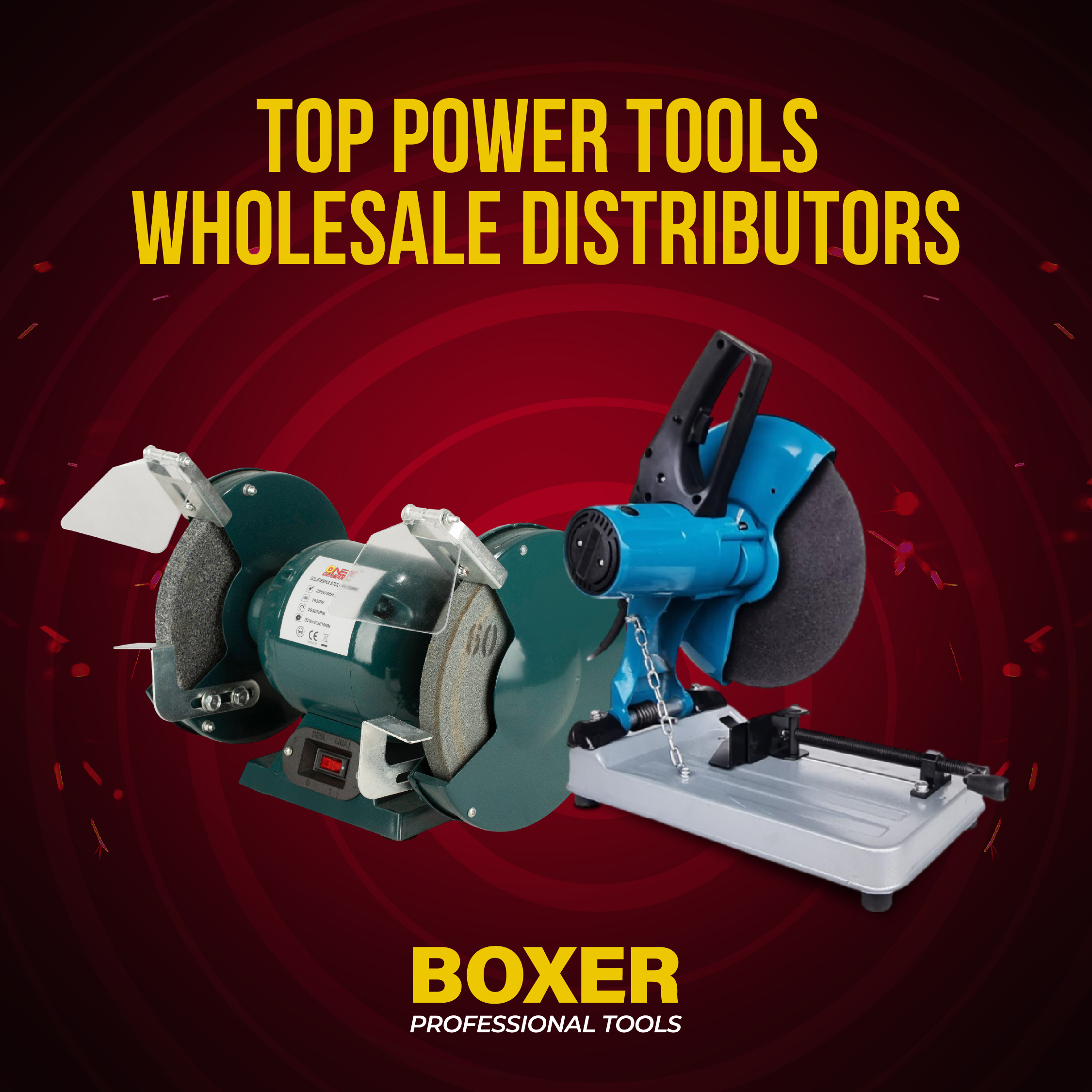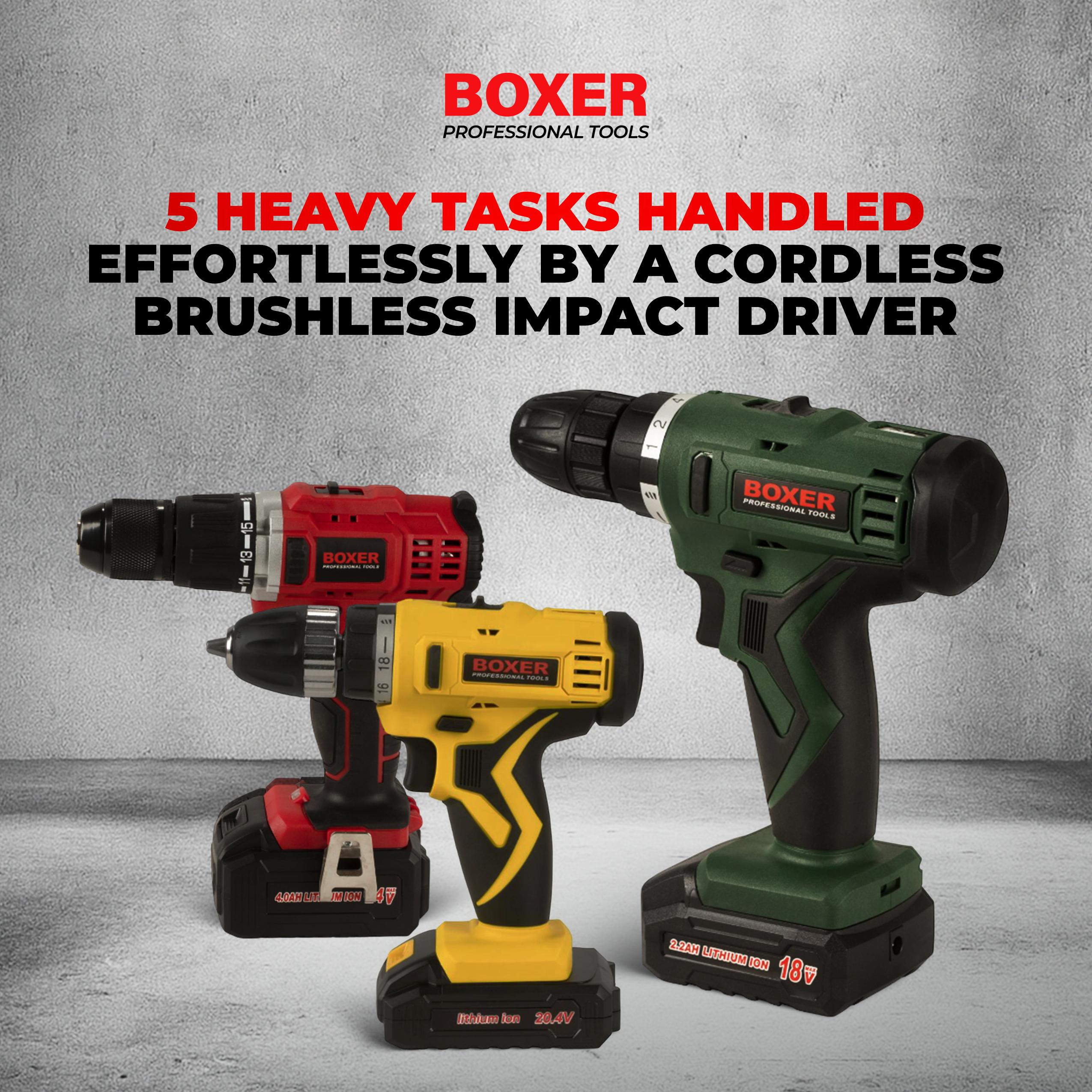
Hand Tools vs. Power Tools: When to Use Each
When tackling home improvement, DIY projects, or professional work, choosing between hand tools and power tools can significantly impact the efficiency and quality of your tasks. While hand tools offer precision and simplicity, power tools bring speed and power to the table. Understanding their unique strengths and when to use each is essential for achieving the best results.
Understanding Hand Tools
What Are Hand Tools?
Hand tools are manually operated devices that don't rely on external power sources. Examples include hammers, screwdrivers, wrenches, pliers, saws, and chisels. These tools have been fundamental in crafting and repairing for centuries, providing unmatched precision and control.
Advantages of Hand Tools
Precision: Hand tools are ideal for tasks requiring careful detail or intricate craftsmanship, such as carving wood or assembling delicate items.
Durability: Made with fewer mechanical parts, hand tools are built to last and require minimal maintenance.
Portability: Since they don't rely on electricity or batteries, hand tools can be used anywhere.
Affordability: Hand tools are often more budget-friendly than power tools, making them a great choice for casual use.
Common Uses for Hand Tools
DIY Repairs: Simple repairs like tightening screws or fixing small appliances.
Woodworking: Precision tasks such as carving, trimming, or fitting joints.
Gardening: Essential tools like pruners, shears, and spades make gardening tasks more manageable.
Basic Household Tasks: Hanging pictures, assembling furniture, or repairing leaky faucets.
Understanding Power Tools
What Are Power Tools?
Power tools are equipped with motors or batteries to handle tasks that demand speed, power, or repetition. Examples include drills, electric saws, grinders, and nail guns. These tools revolutionized construction, manufacturing, and home improvement by reducing manual effort and increasing efficiency.
Advantages of Power Tools
Speed: Power tools complete tasks much faster than hand tools, saving time on large projects.
Consistency: They provide uniform results, essential for sanding, cutting, or repetitive drilling.
Ease of Use: Designed to reduce physical strain, power tools make heavy-duty tasks more manageable.
Versatility: Many power tools come with adjustable settings and attachments, enabling them to perform multiple functions.
Common Uses for Power Tools
Construction: From drilling holes to cutting lumber, power tools are indispensable in construction.
Home Renovations: Tasks like installing cabinets, laying tiles, or painting walls are easier with power tools.
Metalwork and Plumbing: Grinding, welding, or cutting pipes require the strength and precision of power tools.
Large Projects: When working on sizable or time-sensitive jobs, power tools help you accomplish more in less time.
When to Use Hand Tools
1. Precision Tasks
Hand tools excel in jobs requiring finesse, such as trimming wood or tightening screws in fragile components. For example, assembling a piece of intricate furniture often benefits from the careful control offered by manual tools.
2. No Access to Power
In remote locations or situations where electricity is unavailable, hand tools are indispensable. Garden work or outdoor repairs are good examples where their independence from power sources is beneficial.
3. Occasional Use
If you only occasionally need a tool, investing in a hand tool is cost-effective. It’s a practical choice for small, infrequent repairs around the house.
4. Smaller Jobs
For tasks like fixing a drawer handle or hanging a picture frame, hand tools are more than sufficient. They eliminate the setup time required for power tools, making the process straightforward.
When to Use Power Tools
1. Time-Sensitive Projects
Power tools are invaluable when speed is critical. Whether it’s building a deck or assembling multiple furniture pieces, the time saved using power tools is unmatched.
2. Repetitive Tasks
When performing repetitive actions, such as drilling numerous holes or driving screws into drywall, power tools significantly reduce physical strain and time investment.
3. Heavy-Duty Work
Power tools are the go-to choice for cutting through tough materials like metal or concrete. Their power and efficiency make them ideal for demanding construction and renovation projects.
4. Large-Scale Jobs
For extensive projects like remodeling a house or building a shed, power tools ensure consistent results while minimizing fatigue, allowing you to work longer with greater efficiency.
Combining Hand Tools and Power Tools
While each type of tool has its strengths, the best results often come from combining them. Here’s how they can complement each other:
Furniture Assembly: Use a power drill for faster screw installation, but rely on a manual screwdriver for final adjustments and tighter spaces.
Woodworking: Power tools like electric sanders can prepare large surfaces, while hand chisels and planes refine the details.
Home Repairs: Power tools handle the bulk of the work, while hand tools are useful for delicate finishes or working in cramped spaces.
Safety Considerations
Whether you’re using hand or power tools, safety should always come first. Here are some essential tips:
Hand Tool Safety:
Always use the right tool for the job to avoid damage or injury.
Keep tools clean and well-maintained to ensure effectiveness.
Store tools properly to prevent accidents and prolong their lifespan.
Power Tool Safety:
Wear protective gear such as gloves, goggles, and ear protection.
Check tools for damage or wear before each use.
Follow manufacturer guidelines and never bypass safety features.
Popular Brands for Tools
Investing in high-quality tools ensures durability and better performance. For reliable hand tools, consider brands like Stanley, Craftsman, and Kobalt. For power tools, trusted names include DeWalt, Makita, Bosch, and Boxer Tools, which offers a range of durable and efficient options tailored for professionals and DIY enthusiasts alike.
Conclusion
Hand tools and power tools each have their place in any toolkit, offering unique advantages that cater to different tasks. Hand tools are perfect for precision, portability, and affordability, while power tools excel in speed, power, and versatility.
Understanding when to use each type of tool can enhance your efficiency, reduce effort, and improve the quality of your work. Whether you’re a homeowner fixing minor issues or a professional tackling major projects, a well-balanced toolkit of hand and power tools is essential for success.
Copyright © 2025 Boxertools | Powered By Orance Media Group








